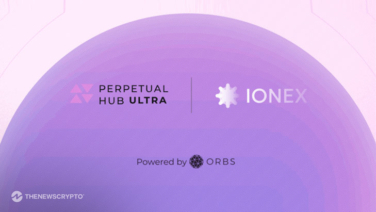One of the biggest and most well-known crypto funds with Asian roots, HashKey Capital, has released its yearly 2022 DeFi Ecosystem Landscape Report. The report examines the condition of the decentralized financial sector today and demonstrates that, despite the crypto winter, the field is nevertheless prospering and brimming with opportunity.
A still-emerging DeFi business that continues to draw a startling amount of venture capital has excellent reasons to be positive about the future, even if the overall crypto market has been depressed throughout 2022. According to HashKey’s report, VCs poured more than $14 billion into 725 different crypto ventures in the first half of 2022 alone, many of which are DeFi protocols.
Not only has venture capital money poured into DeFi over the last year, but the industry has also drawn a sizable number of new consumers. DeFi user growth in 2022 was an optimistic 44% quarter-over-quarter, indicating that the industry still has a possibility to see exponential development. DeFi also achieved a noteworthy feat when it reached 5 million user wallets in the third quarter of 2022.
The report by HashKey makes several similarities between the world of DeFi and that of traditional finance, or TradFi. For instance, it claims that the sector’s total locked value is comparable in size to the assets managed by a medium- to large-sized U.S. bank. The research reveals that at its peak, DeFi’s TVL would have been the 20th biggest bank in the United States. Overall, DeFi’s market capitalization has surpassed Santander Bank and is on track to catch up to several other tier-1 banks. The report also emphasizes that over 25% of the 400 Fintech firms with the highest revenue growth are now blockchain and cryptocurrency-focused organizations.
Few observers would be shocked to hear that Ethereum continues to be the most prevalent blockchain in the area, hosting 58% of all activity, when they take a closer look at the DeFi market. The top six market areas, DEXs, Lending, Asset Management, CDPs, Derivatives, Insurance, and Staking, generated $8.2 billion in fees in total, demonstrating the potential of DeFi protocols to support themselves.
With Huntingdon Valley Bank, a Pennsylvania Chartered Bank, obtaining loan clearance in MakerDAO with an initial debt cap of $100 million and a 12-month aim of $1 billion, there have been some hopeful developments for institutional exploration in DeFi as well. Also under consideration is Societe Generale’s application for a $30 million loan from MakerDAO. According to the report, J.P. Morgan recently conducted a trial transaction using the Aave protocol, and ING has been looking at using Aave loans.
The introduction of new solutions like Compound Treasury, a platform that allows institutions to use the Compound DeFi protocol in a permissioned way with KYC checks and a defined regulatory framework, would probably assist the sector given TradFi’s rising interest in DeFi.
The advent of new markets this year, such as uncollateralized lending to TradFi institutions, is another encouraging development for DeFi. According to the report from HashKey Capital, the third quarter of 2022 was very positive for this industry, with a TVL that increased from $26 million in July to $76 million in October. Uncollateralized crypto-institutional loans have a lot of potential since they have the ability to increase the liquidity of real-world assets. HashKey is also optimistic about the emerging NFT lending sector. According to the research, by the end of November, there were 81 separate NFT collections with floor prices more than 5 ETH (or around $7,500), all of which could be used as DeFi lending collateral. According to the analysis, the top six NFT collections on Ethereum essentially constitute collateral worth over 1.4 million ETH, or more than $2 billion in fiat.
Overall, HashKey’s report presents a fairly favorable overall picture of the DeFi sector. It presents a compelling argument in favor of the emergence of a new financial paradigm that is founded on the ideas of collaboration, composability, open-source code, and accessible, transparent networks. Over the next year, institutional adoption is anticipated to increase more quickly as DeFi’s infrastructure develops to support more businesses that must operate in conformity with regulations.
Because many market players are waiting for a more favorable macroeconomic situation before becoming engaged with more volatile assets, it is too soon to say if 2023 will be the year of DeFi’s summer 2.0. DeFi seems to be in a good position to considerably outperform most other asset classes, however, if the global economy starts to improve next year.
“Many centralized financial systems failed this year, the market realized that DeFi, which is entirely on-chain based and extremely transparent, might be the answer to the innovation dilemma of non-compliant financials,” says Jupiter Zheng, Research Director at HashKey Capital.
One may download the DeFi Ecosystem Landscape Report from HashKey Capital here.








